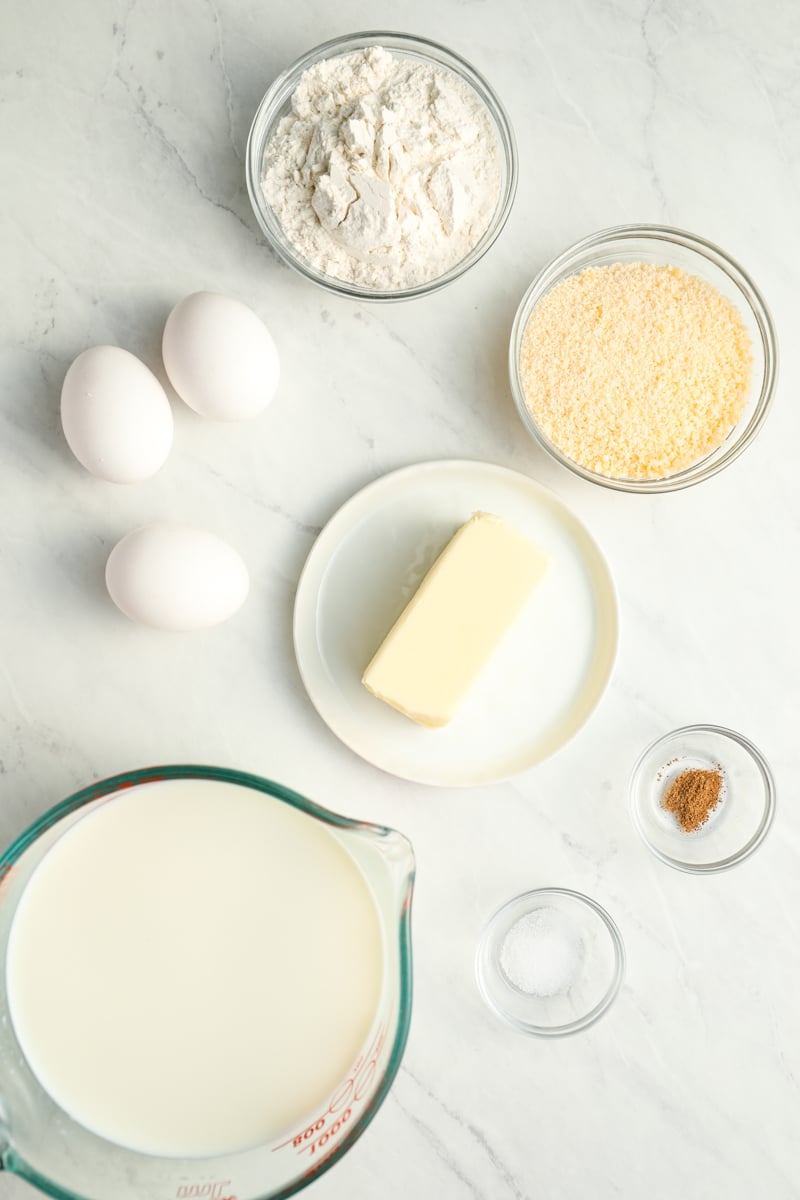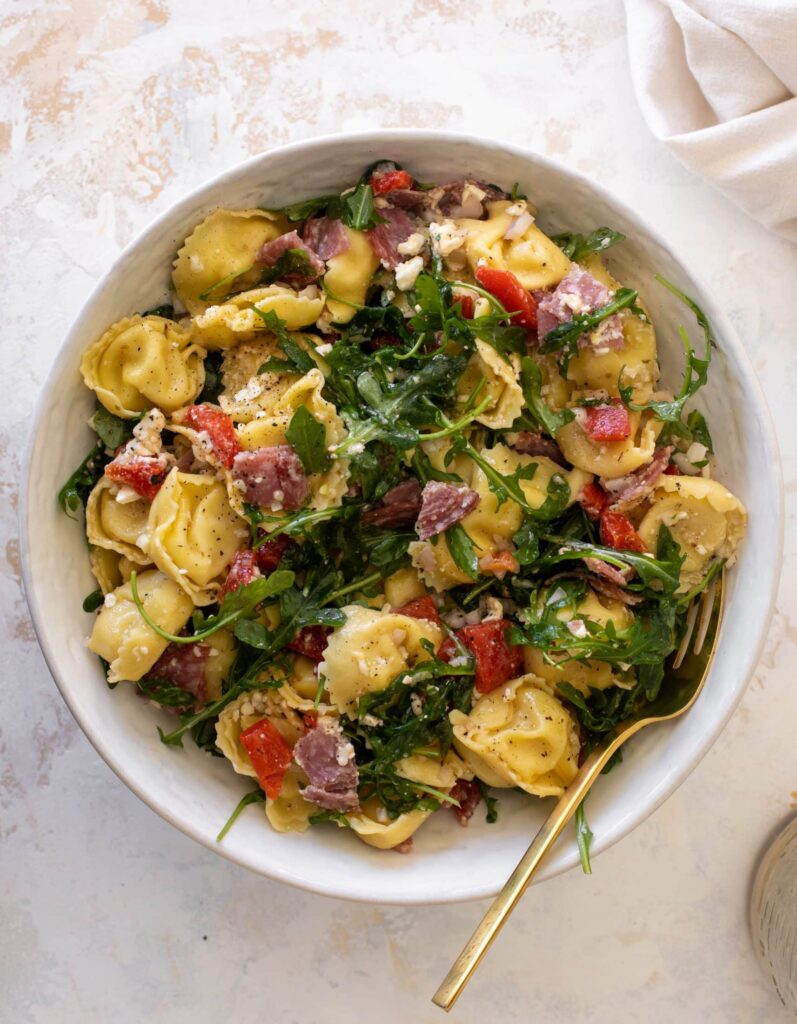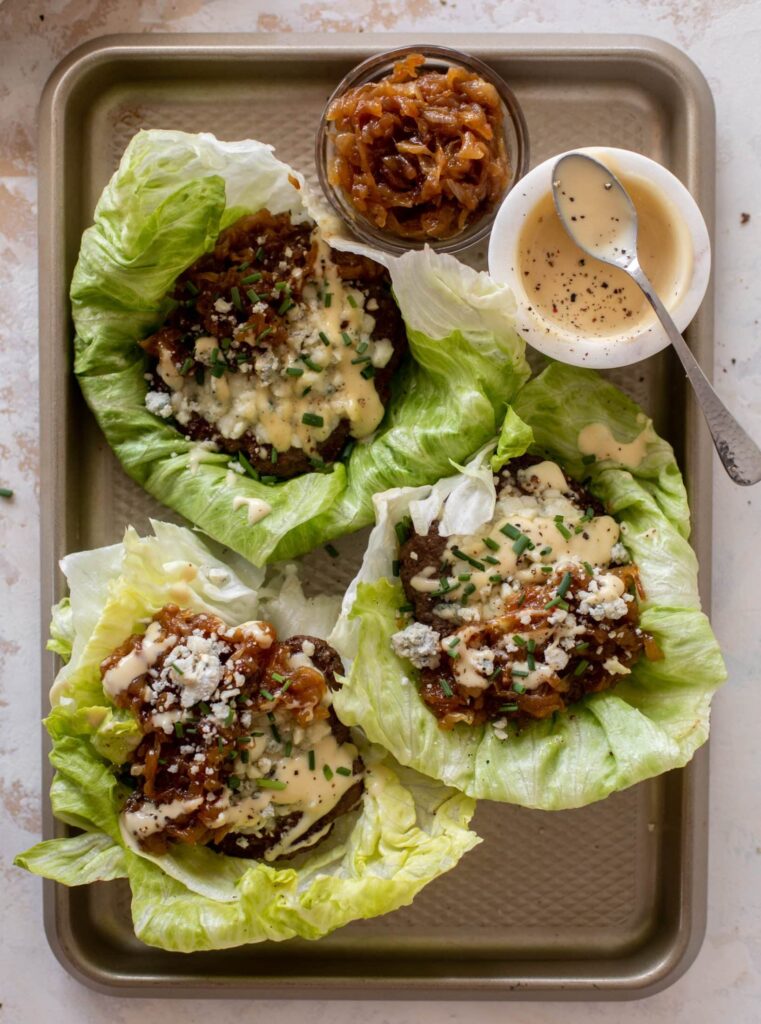This post may contain affiliate links. Read my full disclosure policy.
Learn how to make authentic Greek moussaka with layers of roasted eggplant, creamy potatoes, and a savory meat sauce topped with rich, velvety béchamel. This Mediterranean classic is easier than you think and perfect for special gatherings or a comforting family meal.
Moussaka is a beloved Mediterranean dish from Greece, featuring layers of roasted eggplant, creamy potatoes, and savory meat sauce with a hint of cinnamon—all topped with a thick, luscious béchamel. It’s the ultimate comfort food, perfect for big gatherings or cozy family dinners, and guaranteed to have everyone coming back for seconds.
While it might seem a bit involved, it’s really no harder than making lasagna! To keep things manageable, try roasting the vegetables or making the meat sauce ahead of time—this way, you can enjoy the process without feeling rushed.
“Followed the recipe to a T. It was a lot of steps, but not hard at all. Love that the veggies are roasted instead of fried. Such a delicious moussaka recipe…my crew loved it!”
What You’ll Need To Make Moussaka




- Salt: Draws out moisture from the eggplant and seasons the dish.
- Extra-Virgin Olive Oil: Adds richness to the sauce and vegetables.
- Eggplant & Yukon Gold Potatoes: The two key vegetables in moussaka, offering layers of savory flavor and hearty texture that complement the rich meat sauce.
- Onion & Garlic: The flavor foundation for the meat sauce.
- Spices: A blend of paprika, oregano, red pepper flakes, cinnamon, and nutmeg infuse the dish with warmth and complexity.
- Dry Red Wine: De-glazes the pan and enhances the sauce’s richness.
- Ground Beef: The base of the meat sauce, providing texture and flavor. Feel free to use ground lamb here if you prefer.
- Crushed Tomatoes: Create a savory, slightly sweet sauce base.
- Butter and All-Purpose Flour: Together, they form the base that thickens the béchamel sauce.
- Whole Milk: Adds creaminess and richness to the béchamel.
- Pecorino Romano Cheese: A great substitute for the more traditional Kefalotyri, it adds a similarly sharp, salty flavor to the béchamel—plus, it’s much easier to find at most grocery stores.
- Egg Yolks: Thicken and enrich the béchamel for a luscious top layer.
- Jump to the printable recipe for precise measurements
Step-By-Step Instructions
Bake for 30 to 35 minutes. Rest before slicing. Moussaka can be assembled up to 24 hours ahead of baking.


You May Also Like
Moussaka Recipe


With its hearty veggies, savory meat sauce, and creamy topping, moussaka delivers all the comforting flavors you crave in one big Greek dish.
Ingredients
For the Eggplant
- 2 large eggplant (about 2 pounds/907 g), peeled and cut into ¾-inch (2-cm) cubes
- 1 teaspoon salt
- ¼ cup extra-virgin olive oil
For the Potatoes
- 1½ lbs Yukon gold potatoes, sliced crosswise ¼ inch thick
- 1½ tablespoons extra-virgin olive oil
- ½ teaspoon salt
For the Meat Sauce
- 1 tablespoon extra-virgin olive oil ½ teaspoon sugar
- 1 large yellow onion, finely chopped
- 5 cloves garlic, minced
- ½ cup dry red wine
- 2 teaspoons paprika
- 1 tablespoon dried oregano
- ¼ teaspoon crushed red pepper flakes
- ¾ teaspoon ground cinnamon
- 1½ lbs 85% lean ground beef
- 1 (15-oz can) crushed tomatoes (1¾ cups; see note)
- 1 teaspoon salt
- ½ teaspoon sugar
For the Béchamel
- ½ cup (1 stick) unsalted butter
- ⅔ cup all-purpose flour
- 3 cups whole milk
- ½ cup finely grated Pecorino Romano cheese
- ¼ teaspoon salt
- ⅛ teaspoon ground nutmeg
- 3 large egg yolks
Instructions
-
Prepare the Eggplant: Place the eggplant in a colander, sprinkle evenly with the salt, and toss with your hands. Let it sit for 30 minutes to 1 hour, then blot dry with paper towels or a clean dish towel. Line a baking sheet with heavy-duty aluminum foil. Directly on the foil, toss the salted eggplant with the oil, then spread it into a single layer.
-
Prepare the Potatoes: On a separate baking sheet (do not line with foil), toss the potato slices with the oil and salt, arranging them in a single layer.
-
Position two oven racks in the middle and lower third of the oven, then preheat to 450°F.
-
Place the eggplant on the middle rack and the potatoes on the lower-middle rack. Roast until the eggplant is softened and lightly browned and the potatoes are tender, 30 to 35 minutes. Toss the potatoes once halfway through to prevent sticking. Set the vegetables aside and reduce the oven temperature to 400°F.
-
Make the Meat Sauce: In a Dutch oven or large pot, heat the oil over medium heat until shimmering. Add the onion and cook, stirring occasionally, until softened, about 5 minutes. Add the garlic and stir constantly until fragrant, about 1 minute. Do not brown. Add the wine, paprika, oregano, red pepper flakes, and cinnamon; increase the heat to medium-high, scraping up any browned bits from the bottom of the pot, and cook until the wine has almost completely evaporated, 2 to 3 minutes. Add the beef, breaking it up with a wooden spoon, and cook until no pink remains, 4 to 5 minutes. Stir in the tomatoes, salt, and sugar, then lower the heat to medium. Cook uncovered, stirring occasionally, until thickened, 6 to 8 minutes. Set aside.
-
Prepare the Béchamel: In a medium saucepan, melt the butter over medium heat. Whisk in the flour and cook, until lightly golden, about 1 minute. Gradually add the milk, about 1 cup at a time, whisking constantly. Increase heat to medium-high and cook, whisking frequently, until thick, smooth, and sputtering, 3 to 5 minutes. It should be the consistency of very runny mashed potatoes. Off the heat, whisk in the cheese, salt, and nutmeg. Whisk in the egg yolks one at a time. Set aside.
-
Assemble the Moussaka: Lightly grease a 9×13-inch baking dish with nonstick cooking spray or olive oil. Arrange the roasted potatoes in an even layer, followed by the eggplant, pressing to create a compact layer. Spread the meat sauce evenly over the eggplant, then spread the béchamel evenly over top.
-
Place the baking dish on a rimmed baking sheet lined with foil to catch any spills. Bake until the top is lightly browned in spots and bubbling at the edges, 30 to 35 minutes. To ensure the dish sets up properly, let it sit at room temperature for 30 minutes before slicing.
Notes
Make-Ahead/Freezing Instructions: Moussaka can be assembled in advance and stored in the refrigerator for up to 24 hours before baking. Simply prepare the dish up to the point of baking, covering it tightly with plastic wrap or foil, and refrigerate. When you’re ready to bake, remove it from the fridge and let it sit at room temperature for about 30 minutes before placing it in the oven.
If you want to freeze moussaka, it’s best to do so before baking and wait until just before baking to add the béchamel sauce (this sauce can separate when frozen). Assemble the dish as instructed, then cover it tightly with plastic wrap and aluminum foil to prevent freezer burn. It can be frozen for up to 3 months. When you’re ready to enjoy it, thaw the moussaka overnight in the refrigerator. Before baking, prepare the béchamel sauce and spread on top, then bake as directed.
If you have leftover moussaka, it can be frozen, but the texture may change after reheating.
Nutrition Information
Serving: 1 squareCalories: 641kcalCarbohydrates: 42gProtein: 26gFat: 41gSaturated Fat: 16gCholesterol: 168mgSodium: 1034mgFiber: 7gSugar: 13g
This website is written and produced for informational purposes only. I am not a certified nutritionist and the nutritional data on this site has not been evaluated or approved by a nutritionist or the Food and Drug Administration. Nutritional information is offered as a courtesy and should not be construed as a guarantee. The data is calculated through an online nutritional calculator, Edamam.com. Although I do my best to provide accurate nutritional information, these figures should be considered estimates only. Varying factors such as product types or brands purchased, natural fluctuations in fresh produce, and the way ingredients are processed change the effective nutritional information in any given recipe. Furthermore, different online calculators provide different results depending on their own nutrition fact sources and algorithms. To obtain the most accurate nutritional information in a given recipe, you should calculate the nutritional information with the actual ingredients used in your recipe, using your preferred nutrition calculator.





